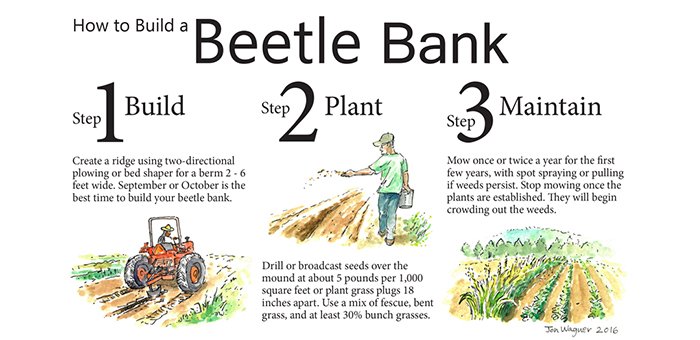Building Biodiversity
While we were nerding out on building habitat within our buildings, the KPU farm team set to work expanding our understanding of sustainable farming and the inclusion of larger ecosystem habitat such as beetle banks, hedgerows and pollinator corridors. The scale of these interventions stretch the imagination to a larger scale, creating natural features that provide habitat and link up pathways for different species to move, migrate, and pollinate. This isn't just farm talk. These are the tools that could also drive urban form and city making. Humans are just one part of a much larger ecosystem with millions of other species. Our cities would benefit from making some good space for others.
What is a beetle bank?
A beetle bank is a berm planted with native grasses and/or wildflowers which attracts and supports ground beetles and other beneficial insects including above-ground nesting bees.
What is a hedgerow?
A hedgerow is a strip of densely planted trees, shrubs and other plants forming a border or living fence. Hedgerows provide numerous benefits including increased biodiversity of birds and bugs, wind breaks and snow capture/retention, creation of beneficial micro-climates with reduced irrigation needs, provision of a yield or harvest of its own (fruit trees, etc...), and enhanced soil biology - fixing nitrogen for example, which is beneficial to other plants.
What is a pollinator corridor?
Pollinator corridors create a diversity of contiguous, permanent wildflower-rich habitats for vulnerable native pollinators. They implement interconnected pathways by linking up already rich habitat such as blossoming pastures on farmland, and large pollinator friendly parks with smaller scaled planted boulevards in towns and cities, and backyard gardens.

